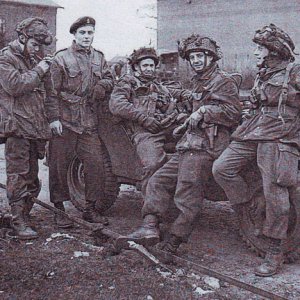

On the north side of town lay a treeless, cultivated plain where the enemy had integrated several defensive measures. What created the most immediate concern among the officers was the steeply rising ground behind the beach.Īnd there were other major concerns. Aerial photos had revealed several fishing boats beached on the shore, suggesting that mines were not likely to be a factor. The beach to the left of the pier, designated Red Beach by the invasion force, was some 50 yards deep, while the beach to its right, designated Green Beach, was roughly 80 yards deep. The beach in front of the town was about 1,000 yards long and divided at its center by a 900-foot concrete pier. Furthermore, they learned that the Italian 429th Coastal Battalion of the XVIII Coastal Brigade had established defenses in all directions around the community, extensively using concrete pillboxes and barbed wire. Obviously, the high ground would offer good defensive positions. Only then were they fully informed of their objectives and told that they were attached to General Terry Allen’s 1st Infantry Division for the invasion of Sicily.ĭziuban and his officers instantly focused their attention upon maps and models Of Gela, which showed the town sitting atop a 150-foot-high mound extending some three miles along the sea and some 4,000 yards inland. It was not until the following day that Dziuban and his officers learned of their mission.

Secrecy was still the order of the day when, on July 5, the engineers, along with the Rangers (a union now designated Force X), were hauled to Algiers and fully combat loaded aboard joseph T. Throughout this training period, the reason for relocating the engineers had remained secret, even to Dziuban.

For the next three weeks the three battalions rigorously trained together in realistic combat simulations, striving to reach a peak of combat efficiency. There the engineers were introduced to Colonel Darby and attached to his newly formed 1st and 4th Ranger battalions. By early June the unit was again on the move, to the Fifth Army Invasion Training Center at Arzew. The transformation had begun in the middle of May, when the engineers left Oran and moved some 100 miles south to an area in the Atlas Mountains, near Magenta, where they underwent a two-week period of intense training in infantry tactics. But with the end of the North African campaign and preparations for Operation Husky, their role quickly changed. For the next 3 1/2 months they had remained close to the secured port of Oran, their only duties routine, noncombat engineering. In fact, they had only been in the Mediterranean theater for five months, having arrived fresh from the States in Oran, Algeria, at the end of January. There was not a single battle-hardened veteran among them. His men lacked any combat experience, however. No one had more confidence in their abilities than Major Stanley Dziuban, the 1st Battalion’s commander. Dickman, the men of the 1st Battalion, 39th Combat Engineer Regiment, appeared ready for their mission, but they were actually a question mark. Headed for Sicily aboard the transport Joseph T.
#WORLD WAR 2 OPERATION HUSKY IN SICILY US ARMY FULL#
Yet what most accounts fail to point out is that a full third of Darby’s command at Gela was neither Rangers nor infantry, but rather an untested battalion of combat engineers.

History has proved very kind to the Rangers’ efforts. The mission to take Gela would add even more luster to the Rangers’ reputation and greatly increase admiration for their leader. Darby and his Rangers had already gained considerable renown in the North African campaign. The task was therefore to be given to a new, elite group of the U.S. Its capture and defense were critical to the success of the whole operation, and the anticipated street fighting would require special handling. Operation Husky, the invasion of Sicily, was only a few hours away, and elements of the 1st Infantry Division were on their way to their intended target, the coastal area of Gela.Īmong the important objectives of the group was Gela proper, a quaint fishing town with a population of about 32,000. In the evening of July 8, 1943, a group of transports and supporting warships was steaming eastward along the Tunisian coastline toward the next joint British-American operation of World War 11. World War II: 39th Combat Engineer Regiment in the Battle for Gela | HistoryNet Close


 0 kommentar(er)
0 kommentar(er)
